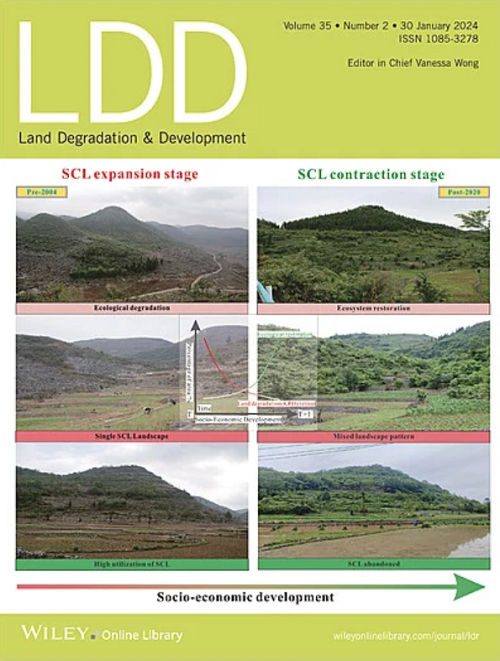Multitemporal Analysis of Land Cover Changes in the Rabanal Páramo Ecosystem (Colombia) From 2000 to 2020 and Its Planning Regulations
IF 3.6
2区 农林科学
Q2 ENVIRONMENTAL SCIENCES
引用次数: 0
Abstract
The páramos, with their high biodiversity and benefits to humanity, are crucial ecosystems in Colombia. Despite their importance, there is a significant knowledge gap regarding the extent of land cover changes and the identification of planning regulatory milestones on these ecosystems. The Rabanal Páramo Regional District, a water supplier for the capital city of Tunja, is under threat. The protected area faces land use conflicts, and updated information needs to be provided on how natural covers have been affected by grazing or the expansion of the agricultural frontier. Considering this, the main goal of this research was to recognize land cover changes in the Rabanal Páramo from 2000 to 2020. To achieve this, we conducted a multi‐temporal analysis using the Corine Land Cover methodology adapted for Colombia. Additionally, we identified the various planning regulations that have contributed to this ecosystem's conservation and restoration efforts. Results showed that the bush cover has significantly decreased, from 27.9% of the total area in 2000 to 20.5% in 2020. In contrast, the mosaic of crops, pastures, and natural spaces has expanded from 2.5% of the total area in 2000 to 8.1% in 2020. The primary strategy in the páramo management plan involves using zoning and land type regulations. Urgent action is needed to balance the demands of agricultural development with the preservation of the páramo ecosystem to ensure a sustainable existence between human activities and the environment.求助全文
约1分钟内获得全文
求助全文
来源期刊

Land Degradation & Development
农林科学-环境科学
CiteScore
7.70
自引率
8.50%
发文量
379
审稿时长
5.5 months
期刊介绍:
Land Degradation & Development is an international journal which seeks to promote rational study of the recognition, monitoring, control and rehabilitation of degradation in terrestrial environments. The journal focuses on:
- what land degradation is;
- what causes land degradation;
- the impacts of land degradation
- the scale of land degradation;
- the history, current status or future trends of land degradation;
- avoidance, mitigation and control of land degradation;
- remedial actions to rehabilitate or restore degraded land;
- sustainable land management.
 求助内容:
求助内容: 应助结果提醒方式:
应助结果提醒方式:


